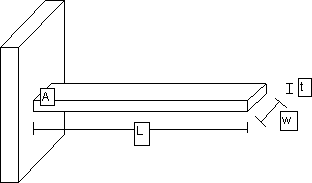Tips to Achieving Separation in a Wireless Bra!
AKA
How to get the center gore of a wireless bra to “tack”. While wireless bras do NOT need to tack to provide support, one may like the separation and “feel” of the center gore touching the chest. This post is for those who are interested in investing ADDITIONAL time to get that center gore to touch the chest wall.
One of the top comments I hear about wireless bras is about the mono-boob many of them create. Then there’s the amount of support (or lack thereof) they provide and how comfortable they are. This is sometimes followed by “Is there a way to separate the breasts in a wireless bra”. The Lanai Wireless Pattern is my answer to the call. But first, a quick lesson bra support systems.
Underwire bras are based an a cantilever support system. What is cantilever support?
“A cantilever is a rigid structural element that extends horizontally and is supported at only one end”
The rigid structural element is the underwire which when attached a firm band acts like the board [A]. A loose band is the equivalent of a diving board whose base is not firmly secured .
Wireless bras are based on a suspension support system. What is suspension based support?
“Used to describe a structure supported from higher points, such as a bridge suspended from piers or a building or floors hung from a separate structure“
The building is the breast and strap supports the breast from above.
Within the wireless bra world, there are varying levels of support due to architecture and material use - much like a building. A wireless bra (a distinction from a stretchy bralette) CAN provide the same amount of support as a underwired bra (think vintage bras). There are some trade offs - such as a different shape and silhouette + often taller necklines but the key to a supportive wireless bra is having a “full frame”. Its easiest to image the “frame” as the 3 sides of a triangle {see suspension illustration]. The Lanai is a wireless bra with a “hidden” frame built in. The center gore and cradle make up part of the triangle - as does the neckline edge of the upper cup. and underarm curve of the powerbar. For this reason, the stay tape in the upper cup has a pretty important job.
The key to getting a wireless bra to tack (bridge area between the breast touch the chest wall) is a curve that matches the breast root (that crease under the breast) AND a center gore tall enough to FULLY encapsulate the breast AND straps centered over the bust piont AND cups with enough depth to enclose it all.
With this in mind, lets get started.
Tip 1
Check the placement of the straps. Are they too wide? Ideal placement is directly above the bust point or just slightly outside of it. You can check simply by pulling the cup above the bust point upward. If this moves the center gore toward the chest, then it may be a good idea to move the strap tab inward.
Tip 2
Use the Center Gore Pattern Piece as a guide. Print out a copy of the Center Gore in the size indicated by your breast root trace then remove the seam allowance. Hold it up to your chest and do a quick visual check of the height and width - keeping in mind that the gore needs to be tall enough to fully encapsulate the breast. If your muslin has a lot of cleavage showing, consider adding some height. Is the top too wide? Base too narrow? Note any changes need then refer to the back of your Instructions for alterations.
Tip 3
Check your Horizontal Hemisphere matches the cup size cut out. A too small cup can cause a perfectly fitting cradle to “float” as there isn’t enough fabric to fully enclose the breast.
Tip 4
Check your breast root trace against the cradle size chart. As we are all individuals with different body shapes, your root may be a different size/shape than what the pattern is expecting. A too wide “wireline” + perfect cup will flatten out the breast even though the volume may be correct. This can also lead to the center not tacking. You may find you need a smaller cradle size (narrower opening) than your wired bras due to the lack of wire spring but also a narrow strip of fabric (like the area under the cups) stretches more than a wider strip.
Tip 5
If you are comfortable with a little pattern drafting, consider copying your breast root trace to your cradle piece(s) for a truly customized fit.
Tip 6
Check the stretch percentage of your fabric. The Lanai Pattern can be used with a variety of stretch percentages - up to 25% in the cups/cradle - without pattern alteration. That said, the material used combined the stretch percentage will play a role in how a bra fits. For more support, go for a smaller percentage (like sheer cup lining). For a more casual lounge bra, go for a higher percentage (like double knits).
Tip 7
Check those grainlines! Unlike my underwired patterns (and many bralette patterns), the direction of stretch for the cups is different. This is by design as has to do with the support structures.



